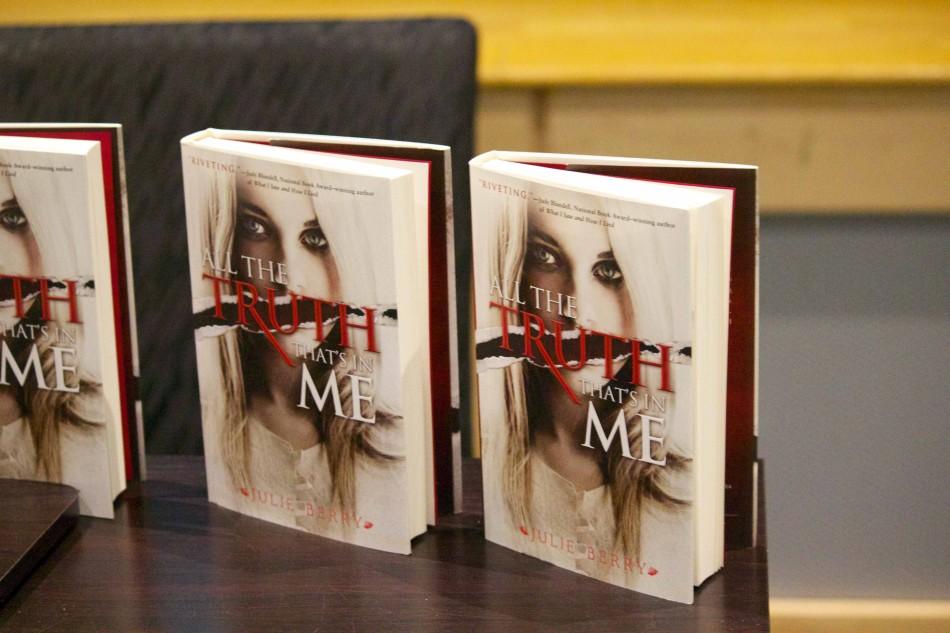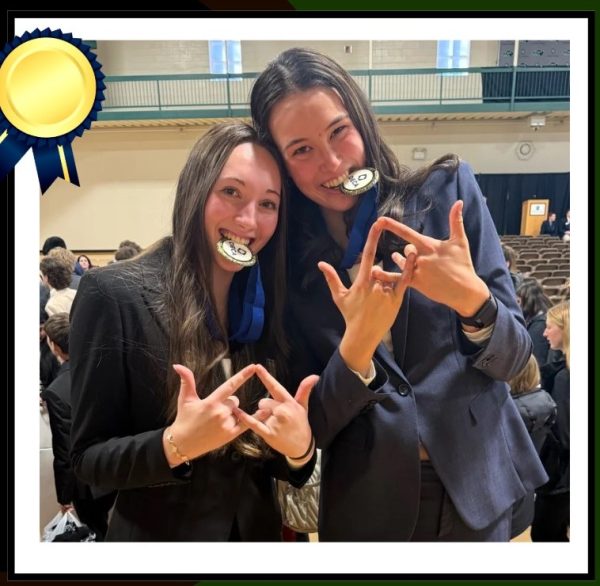A Time to Be Silent, a Time to Speak
Students sat crowded in the Nashoba auditorium as author Julie Berry shared the inspiration for her popular novel All the Truth That’s In Me, including former high-school crushes to times in her life where she doubted her potential. With a captivating personality and contagious laugh, Berry imparted the lessons she learned from her own mistakes and offered advice to students who plan to pursue writing.
Growing up in a poor country town in upper-state New York, Berry’s path to writing success was a bumpy one to say the least. In a town where children were expected to grow to be farmers generation after generation, Julie Berry found herself growing up as an outcast. Berry said that, in a small town like that, it was abnormal for a girl to be outspoken. She found her individuality in her love of learning, devoting a major part of her upbring engrossed in books. That love for learning and reading sparked her imagination that she still calls upon today when writing novels.
Heading into high school, Berry began obsessing over a certain boy. Although she spent each day staring at him and memorizing his schedule, she never said a word to him. Her own shyness and silence played a large role in the development for Jule, protagonist of All the Truth That’s In Me.
The story is set in a vague colonial time period, an ambiguity Berry created on purpose in order to avoid the rigid guidelines of historical fiction. Judith was taken from her home and returned two years later with severe emotional and physical scarring. Upon her return, those around her assum she is impure and consider her an unworthy member of society. Worst of all, Judith is unable to communicate the horror she experienced because her captor cut off her tongue.
Berry takes the reader on an eventful adventure throughout the novel as we observe Judith’s experience in a silenced life. The story is written in second-person, addressing Judith’s love and best friend, Lucas. Because of her punishment, Judith is unable to express her feelings, paralleling the experience of Berry in high school.
High school, Berry said, is a time when girls are often silenced by society or themselves due to fear of rejection and alienation. Through her novel, Berry advocates not only for young women, but for all young adults to “own their story” and share their thoughts and experiences with the world.
“Your unique combination for the world is exactly what the world is waiting for,” Berry told high-schoolers in the audience. “You have to try.”
As a modern-day connection to her story, Berry referenced Malala Yousafzai, a young girl who was gunned down by the Taliban last year for wanting to attend school. Berry said Yousafzai’s determination and love for education was one of the most remarkable things she has ever seen and hoped her story would motivate and inspire audience members.
“You can make it through. You can find happiness,” she told the audience.
Despite a confident and carefree air, Berry herself went through stages where she doubted her own potential. Because All the Truth That’s In Me was such a challenging and groundbreaking piece of work, Berry didn’t believe in its potential for years. It wasn’t until her husband encouraged her to share it that she decided to send it to publishers. Berry said that confidence in his or her writing is one of the most important things for a young writer to have and gave three pieces of advice for aspiring writers:
1. “Be an avid reader.”
Berry emphasized the importance of reading as a tool to become a good writer. She told the audience, “You can’t produce good writing if you don’t consume good writing.”
2. “Write all the time no matter how bad it is.”
The only way to learn is to practice. Berry said that when she was younger, she struggled with writing because she could tell that it was not good. She told the audience that they must write as much as they can and, “be content with the fact that your writing isn’t perfect.”
3. “Find a community.”
Lastly, Berry told aspiring writers to find a group of like-minded individuals who can give you good critical feedback and encourage writers to be able to take criticism and learn from it.
The theme of Berry’s presentation was guided around the bible verse Ecclesiastes 3, “To Everything There is a Season,” by which she assured readers and writers that there is a time to be silent and a time to speak. Citing the challenging decisions Judith faces in All the Truth That’s In Me, she encouraged audience members to utilize their time to speak however intimidating it may be.






